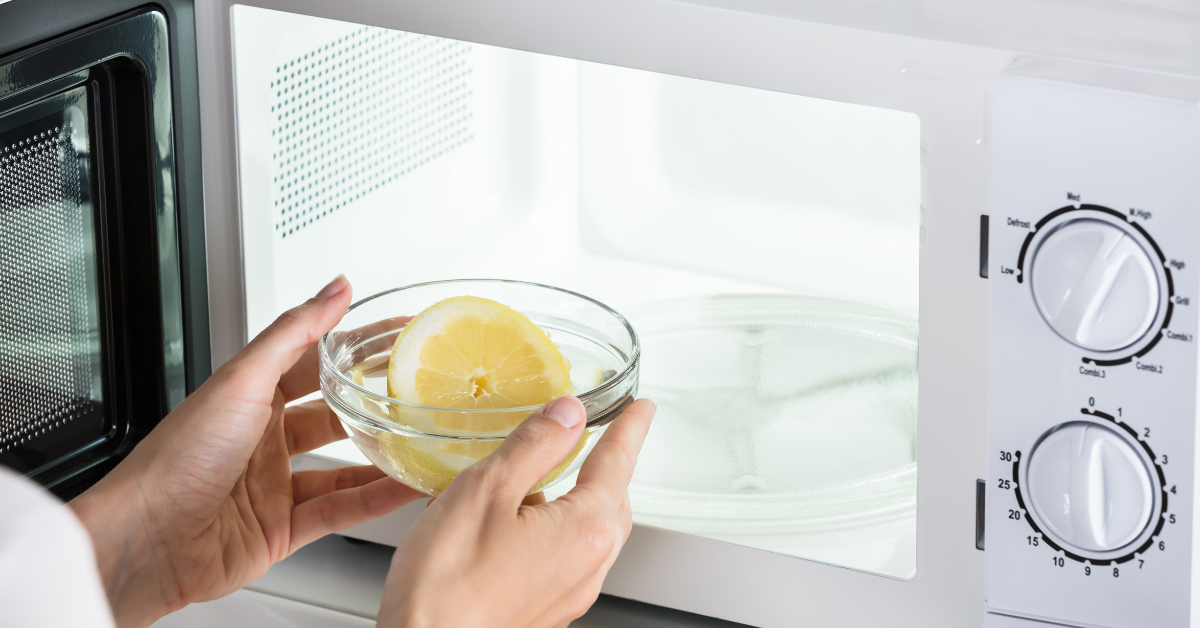
You Should Definitely Clean These 5 Appliances

*Collaborative Post
How clean is your kitchen? You might boast, “You can eat off my floor” — at least if you don’t have toddlers and pets.
However, if the Department of Public Health inspected your home like a restaurant, they might tell a different tale. Germs are invisible — so even if your counters sparkle, hidden dangers can lurk.
What do you need to know to keep your family safe? Here’s why you should definitely clean these appliances.
1. Your Washer and Dryer
You use your washing machine to clean your clothes. Shouldn’t it, by design, be sterile? Perhaps in a perfect world where such devices come with UV lights for disinfection purposes, but in the current one, you need to be a bit more proactive. Think about where mold and mildew grow — moist places. Your first clue might be a musty odor on your clothes.
Fortunately, cleaning your washing machine is a snap. You can buy commercial tablets or use a vinegar and baking soda solution to DIY. Get the job done in a single afternoon while you complete other chores in the meantime.
Pro-tip: Do you use those scent beads? Be very careful to put them only on your clothes without letting them enter the dispensers meant for bleach and detergent. When this occurs, the wax melts, leaving streaks on your clothing. If you have an existing problem, taking your washer apart and cleaning out the wax with hot water does the trick.
Dryers don’t harbor moisture, but the accumulated lint can pose a severe fire risk. Dump your lint trap each time you wash and occasionally scrub the screen in hot, soapy water. Otherwise, gunk from dryer sheets accumulates, causing clogs. Keep the area surrounding your dryer well swept.
If you must clean your ducts, follow these steps:
- Unplug the dryer
- Detach the vent hose from the wall
- Use a vacuum to suck out excess lint
- Use a brush to remove any residual debris
- Wash the vent cover
- Reassemble your device
2. Your Refrigerator
Maybe you know that you should put raw meats below other foods in your refrigerator. However, that precaution alone is insufficient to keep germs from proliferating within, thanks to drips.
To clean your refrigerator, choose a time when it’s close to empty — right before grocery shopping is wise. Take everything out and wipe down the interior, including all shelves and drawers, with a non-toxic cleaner. Vinegar or soapy dish water works well.
3. Your Coffee or Teapot
Are you drinking a literal cup of muck in the morning? Depending on the last time you cleaned your coffee or tea maker, you could be.
Here, at least, taste may guide you to take action, as mineral buildup and accumulated gunk from the grounds can make your first mug wrinkle your nose instead of delighting your senses. The hardest step is to remove mineral deposits by running a mixture of white vinegar and water through the machine unless your warranty requires a special manufacturer formula.
For everything else, use hot, soapy water to clean the various components, like your carafe. You should tackle this chore every three to six months, depending on how many pots you brew daily.
4. Your Microwave
You might resent cleaning the microwave if you’re always the one to tackle the baked-on mess the folks at the office leave. However, you’re doing yourself — and your colleagues or family — a favor when you manage this chore. All that splatter may look harmless, but it provides the ideal breeding ground for bacteria to flourish. The warm interior temperatures do the rest.
Fortunately, you can make this job as easy as dusting with the help of a little steam. Use an “angry mama” or simply a mug filled with water, letting it boil until the gunk lifts. Wipe it out with one rag and go over it a second time with another, using a vinegar solution to kill lingering bacteria.
Keep your microwave cleaner in between scrubs by covering your dishes. You can find covers relatively inexpensively — perhaps start an office pool and invest in one for the workplace, too.
5. Your Ice Maker
Food safety inspectors know that ice makers can make you sick. Did you think freezing would kill every germ? Think again. Species like salmonella, norovirus and e. coli can proliferate in such places, producing a nasty stomach ache. Such infections can spell serious trouble. As if that’s not bad enough, sometimes pests like cockroaches can nest in such spaces. Eek.
To clean your ice maker, unplug your device — it’s wise to do this when you clean your entire fridge. Dump the old ice, and wash all components with hot, soapy water. Now’s the time to swap the filter, which you should do every six months.
After reconnecting your device, run several cycles of ice, disposing of them in the sink. Voila! Your cubes will taste better, your friends will stop complaining that your drinks taste funny, and your family will stay safer.
Appliances You Should Clean
Maybe you take pride in your sparkling kitchen and laundry. However, germs could still lurk if you neglect your appliances.
Take note of these five appliances you should clean and add them to your spring to-do list. It only takes a few extra minutes to protect yourself and your family from germs — and brag about your genuinely clean home.
*This is a collaborative post. For further information please refer to my disclosure page.




